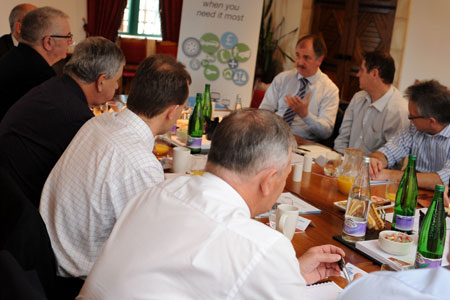Tackling driving accidents benefits a company from a duty of care perspective as well reducing its costs.
An incident rate of 30% is seen as a solid performance; many companies operate at a far higher figure.
A few have reduced their rates to below 20% – seen by many safety experts as the benchmark for best practice.
However, as PricewaterhouseCoopers head of car fleet services Tony Leigh said: “If you have an accident rate of 30% it’s hard to get it lower; but if you are at 70% it’s easy to bring it down.”
Fleet decision-makers at the latest Fleet News roundtable sponsored by Active Fleet Solutions discussed tactics they are using to develop a safer culture and cut the number of driving incidents.
What are you doing to create a culture of safer driving?
Chris Charlton, Northern Powergrid: We have a range of workshops bespoke to the needs of the driver as a result of an incident or, if we identify them as a high risk, as a result of our risk management programme.
Our biggest issue is low-speed manoeuvring.
This year we have gone out to give them live demonstrations, for example understanding the blind spots around the vehicle.
We have also introduced a quiz in the style of A Question of Sport’s ‘what happened next’ round – it’s light-hearted but with a serious message and has gone down well.
And we are developing root cause analysis, retrospectively inputting all preventative accident data over the past three years to understand why they are occurring. It will help us to focus on taking the right action.
Geoff Wright, Celesio Group (UK): Our biggest risk is vans. We have a 15-minute window to deliver to a customer and if a driver is late, they are at fault.
We try to identify a link between late departures and accidents; most happen when the driver is in the middle of their route where they are trying to catch up lost time.
Graham Hine, University of Warwick: We find it very useful to interview drivers to get their feedback about why an incident happened and to understand their operational pressures and environment.
If you engage with the driver, it shows you are listening and supporting them.
Paul Tate, Siemens: We usually find it is related to the size of vehicle in a certain location or site. You have to be proactive, but first you have to be reactive to the data.
We are inundated with reports and a picture emerges but it can get clouded, so we have appointed specialists in this area to make recommendations. In the long run, this will save us money.
















Login to comment
Comments
No comments have been made yet.